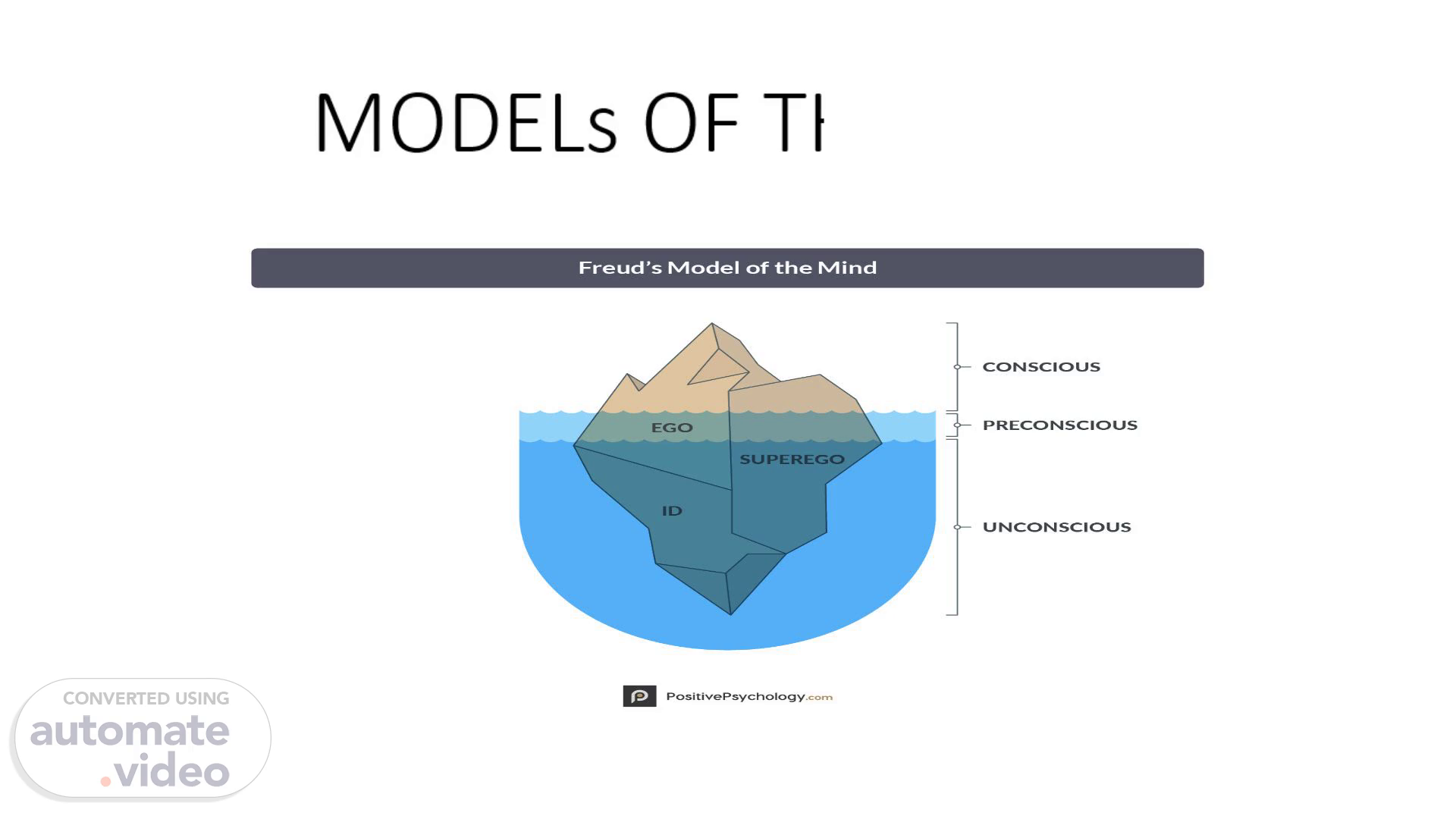Scene 1 (0s)
MODELs OF THE MIND. Freud's Model Of the Mind EGO SUPEREGO PositivePsychOlogy. CONSCIOUS PRECONSCIOUS UNCONSCIOUS.
Scene 2 (7s)
063. I WANT IT NOW! I NEED TO DO A BIT OF PLANNING TO GET IT. EGO you CAN'T HAVE IT. ITS NOT RIGHT. SUPER EGO.
Scene 3 (23s)
[Audio] Conscious: This is where our current thoughts, feelings, and focus live.
Scene 4 (31s)
[Audio] Preconscious (sometimes called the subconscious): This is the home of everything we can recall or retrieve from our memory; Unconscious: At the deepest level of our minds resides a repository of the processes that drive our behavior, including primitive and instinctual desires (McLeod, 2013)..
Scene 5 (52s)
[Audio] Later, Freud posited a more structured model of the mind, one that can coexist with his original ideas about consciousness and unconsciousness. In this model, there are three metaphorical parts to the mind:.
Scene 6 (1m 7s)
[Audio] Id: The id operates at an unconscious level and focuses solely on instinctual drives and desires. Two biological instincts make up the id, according to Freud: eros, or the instinct to survive that drives us to engage in life-sustaining activities, and thanatos, or the death instinct that drives destructive, aggressive, and violent behavior..
Scene 7 (1m 34s)
[Audio] Ego: The ego acts as both a conduit for and a check on the id, working to meet the id's needs in a socially appropriate way. It is the most tied to reality and begins to develop in infancy.
Scene 8 (1m 51s)
[Audio] Superego: The superego is the portion of the mind in which morality and higher principles reside, encouraging us to act in socially and morally acceptable ways (McLeod, 2013)..
Scene 9 (2m 5s)
[Audio] Defense Mechanisms Freud believed these three parts of the mind are in constant conflict because each part has a different primary goal. Sometimes, when the conflict is too much for a person to handle, his or her ego may engage in one or many defense mechanisms to protect the individual..
Scene 10 (2m 22s)
Defense Mechanism Repression Regression Displacement Sublimation Reaction formation Projection Rationalization Description Unknowingly placing an unpleasant memory or thought in the unconscious Reverting back to immature behavior from an earlier stage of development Redirecting unacceptable feelings from the original source to a safer, substitute target Replacing socially unacceptable impulses with socially acceptable behavior Acting in exactly the opposite way to one's unacceptable impulses Attributing one's own unacceptable feelings and thoughts to others and not yourself Creating false excuses for unacceptable feelings, thoughts, or behavior Example Not remembering a traumatic incident in which you witnessed a crime Throwing temper tantrums as an adult when you don't get your way Taking your anger toward your boss out on your spouse or children by yelling at them and not your boss Channeling aggressive drives into playing football or inappropriate sexual desires into art Being overprotective of and lavishing attention on an unwanted child Accusing your boyfriend of cheating on you because you have felt like cheating on him Justifying cheating on an exam by saying that everyone else cheats.
